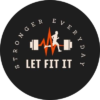You’re familiar with that sensation immediately following an exercise session. When your pulse is pounding, your shirt is drenched, and your muscles seem ready to burst? At that point, you feel invincible. Yet when morning comes, everything changes. Suddenly going up stairs seems torturous, holding a cup feels demanding and taking a seat feels like a betrayal. Yep… that’s your body shouting one message loudly and clearly about muscle recovery.
Many view muscle recovery as a privilege, something to attend to only when there’s spare time or excessive soreness makes movement difficult. However, here’s a fact most lifters overlook: the progress you make relies heavily on the quality of your recovery rather than on the intensity of your workouts.
This is the aspect nobody mentioned to you when you initially entered the gym.
This is the aspect that distinguishes individuals who develop from those who collapse.
Let’s analyze everything thoroughly. At a clear and practical pace. By the end of this, you’ll know what your muscles experience and how to accelerate the whole muscle recovery process without speculation, excessive exercise or spending weeks dealing with unnecessary soreness.
What Really Occurs to Your Muscles While You Exercise?
Prior to discussing recovery, it’s important to grasp what occurs within your body each time you lift weights or challenge yourself with a cardio workout
When you exercise. In strength training, HIIT or any vigorous workout. You cause small microscopic tears in your muscle fibers.
It may seem frightening. It’s truly beneficial. The foundation for muscle growth and repair is these microscopic tears.
Consider your muscles as a building project.
Training is the demolition.
Recovery involves reconstruction. It is within this reconstruction phase that true transformation occurs.
Here’s the twist that many fail to notice:
Muscles don’t develop in the gym. They develop while resting.
If you skip recovery, rush it, or just ignore it altogether, you’re basically slowing down your own progress even if you train like an absolute beast.
Your body can only rebuild and get stronger when it gets three key things:
- Proper rest
- Proper fuel
- Proper recovery strategies
What if any of these are absent?
Soreness, exhaustion, sluggish progress, mood changes, diminished performance, and occasionally even injury are to be expected.
Why the Second Half of Your Workout Should Be for Muscle Recovery
If the workout represents the part of the process, muscle recovery constitutes the latter part. Truthfully, this is the phase where many individuals fall short.
This is how genuine recovery truly benefits your body:
Reduces the Risk of Injuries
Overused muscles are like rubber bands that have been overextended. They eventually break. Taking breaks helps avoid strains, ruptures and lasting harm.
Enhances Performance
When muscles have recovered, they perform effectively. You can lift weights, increase your speed and work out more intensely without being weighed down by soreness from the previous workout.
Alleviates Muscle Pain
Effective post-exercise recovery results in limping fewer groans and not shying away from stairs as if your survival hinges on it.
Supports Muscle Growth
Progress occurs during the recovery phase. Without recovery, growth does not happen.
Regardless of whether your goal is appearance, power, weight reduction or well-being recovery is the essential secret you must not overlook.
1. Prioritize Quality Sleep (The Real King of Muscle Recovery)
If you overlook all content in this blog, make sure not to disregard this section:
Sleep is the number one muscle recovery tool.
When you finally fall asleep, your body starts releasing growth hormones in the background. Those hormones basically jump in like a repair crew fixing up the muscle damage, helping you get stronger, and reducing all that hidden inflammation you don’t even notice.
If you don’t get sleep, you are undermining your own advancement.
How to optimize sleep for better recovery:
- Be consistent. Same sleeping time each day.
- Set a bedtime routine. Avoid coffee, screens, and large meals right before bed.
- Target 7–9 hours. If you get less than 6 hours, your muscle recovery decreases by nearly 50%.
This explains why certain individuals practice for months yet appear unchanged.
It’s not due to training… but because they fail to get enough sleep.

2. Fuel Your Body Properly for Maximum Muscle Repair
Consider your body to be an elite engine. The output will be mediocre if you utilize low-quality fuel.
One of the main factors in quicker muscle healing and less discomfort is post-workout nutrition.
The Basis of Muscle Recovery Is Protein
Your muscles actually utilize protein to fix themselves.
This is the target you ought to strive for:
- 20–30 grams of protein after your workout
- Protein sources with fat, such as chicken, fish, eggs, Greek yogurt, tofu, lentils or protein shakes
Don’t avoid carbs. They are more important than you realize
Carbohydrates restore your glycogen reserves (the energy supply in your muscles).
Avoiding carbs will make your following exercise session feel like agony.
Maintain Hydration (Lack of Fluids Prolongs Recovery, by Hours)
Your muscles are 70–75% water.
Everything feels worse when you don’t drink enough water, including stiffness, discomfort, and those sporadic tiny muscular spasms. Everything strikes more forcefully.
So seriously, sip water all day. Not just when you’re inside the gym pretending to be healthy.
3. Stretching: the recovery habit everyone ignores but really shouldn’t
Stretching involves more than merely touching your toes and being flexible. In fact, it reduces discomfort and prevents injuries.
After a tough workout, your muscles kind of bunch up and get tight. Stretching basically tells them, “Relax, chill,” and brings them back to their normal state. Plus, it boosts blood flow, which helps your body recover way faster
How to stretch for better workout recovery:
- Concentrate on the muscle areas you worked on
- Hold each stretch for 30–60 seconds
- Avoid bouncing; inhale and stay calm
- On off-days, try light yoga or mobility flow
Regular stretching is, among the methods to reduce soreness and improve performance the following day.

4. Foam Rolling: Your Personal At-Home Deep Tissue Massage
Using a foam roller can be uncomfortable at first. Proves incredibly beneficial afterwards. It focuses on dispersing knots and boosting blood flow.
Foam rolling assists with:
- Alleviate discomfort
- Enhance flexibility
- Speed up muscle repair
- Loosen stiffness prior to exercising
Foam rolling tips:
- Roll slowly over tight spots
- Spend 20–30 seconds on sore areas
- Never roll on bones or joints
- Use it before & after workouts
After becoming accustomed to it, you’ll question how you managed before having it.
5. Active Recovery: Increase Movement to Reduce Pain
Whether you believe it. Not light activity can accelerate healing more effectively than total inactivity.
Active recovery enhances circulation. Delivering oxygen and nutrients to your muscles while eliminating toxins and lactic acid.
Best active recovery options:
- Gentle strolling
- Swimming
- Cycling at a slow pace
- Light yoga
- Movement drills
- Easy stretching
Keep in mind: active recovery does not count as training.
It ought to be invigorating, not draining.
Typical Muscle Recovery Errors That Hinder Your Progress
Let’s discuss the errors that nearly everyone commits. The ones that leave individuals frustrated, trapped and stagnant.
1. Skipping Rest Days
If you exercise daily without any rest, you are definitely overtraining.
This results in tiredness, decreased efficiency and ultimately harm.
2. Poor Hydration
Even slight dehydration significantly hinders muscle recovery.
3. Ignoring Pain
Normal soreness? Fine.
Is the pain sharp, sudden or ongoing? It requires care.
4. Eating Too Little
Your body is unable to fix what lacks the fuel.
5. Training With Incorrect Form
No level of rehabilitation can correct technique.
Steer clear of these errors. You’ll notice the change right away.
Cutting-Edge Muscle Recovery Methods to Enhance Your Performance
Once you understand the basics, you can explore recovery strategies to further expedite your progress.
Cryotherapy
Exposure to cold decreases inflammation. Offers rapid relief from muscle soreness.
Select your method: ice baths, cold showers or cryo chambers.
Epsom Salt Baths
Magnesium sulphate eases muscle stiffness. Relieves tension.
Additionally, the heat promotes circulation.
Professional Sports Massages
A qualified therapist is able to detect muscle imbalances, release tension points and reestablish correct movement patterns.
Compression Gear
Helps improve blood flow and reduce swelling during long recovery periods.
Building a Muscle Recovery Routine That Actually Works
An effective recovery plan doesn’t have to be complex. It simply needs to be regular.
Here is an easy plan:
Post-workout
- 20–30g protein
- Carbs for energy replenishment
- Drink water
- 10 minutes of stretching
- 5 minutes of foam rolling
Daily
- Drink enough water
- Prioritize sleep
- Eat balanced meals
- Listen to your body
Weekly
- Have at least 1–2 full rest days
- Include 1 day of active recovery
- Do mobility or yoga sessions
- Try a massage or Epsom bath when needed
By sticking to this schedule, you’ll observe:
- Less soreness
- More strength
- Better performance
- Faster growth
- Fewer injuries
To be honest? You’ll simply feel improved. Both mentally and physically.
Closing Remarks: Honour Muscle Recovery and Your Body Will Thank You
Muscle recovery isn’t the “extra step” at the end of a workout.
It is the workout. This is the stage in which your body changes, develops, repairs and fortifies itself. Disregard recovery, and you’ll remain trapped. Give it priority and you’ll advance more quickly than ever before.
Whether it is improving your sleep, properly nourishing your body, regularly stretching or incorporating recovery methods. Each minor effort contributes significantly.
So train hard… but recover smarter. Your muscles, your performance, and your future self will thank you for it.


Pingback: The Ultimate Forearm Workout: Build Strength and Definition
Pingback: Incredible Benefits of Strength Training for All Ages
Pingback: Home Workouts VS Gym Workouts: Which Is Better for You?
Pingback: Weight Training for Women: The Truth No One Told You
Pingback: 9 Best Bodyweight Back Exercises for Strength & Posture
Pingback: Shoulder Workouts That Build Strength, Power & Perfect Posture
Pingback: How to Strengthen Lower Back (The Smart Way Trainers Actually Do It)
Pingback: Lower Chest Exercises: The Ultimate Guide to Defining Your Pecs
Pingback: How to Read Nutrition Labels Like a Pro